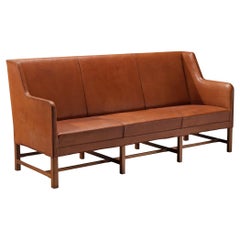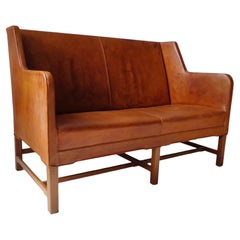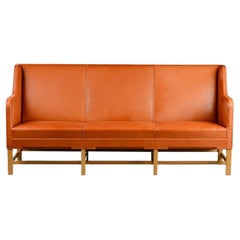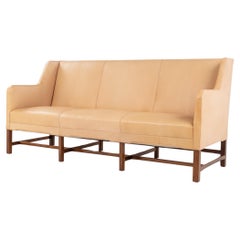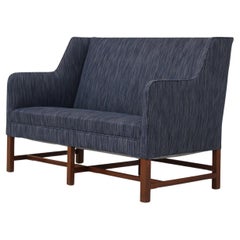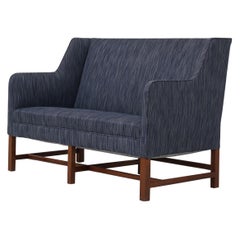Kaare Klint 5011
Vintage 1930s Danish Scandinavian Modern Sofas
Leather, Mahogany
Vintage 1940s Danish Scandinavian Modern Sofas
Leather, Mahogany
Vintage 1970s Danish Scandinavian Modern Sofas
Leather, Ash
Early 20th Century Danish Mid-Century Modern Sofas
Leather
Recent Sales
Mid-20th Century Danish Scandinavian Modern Sofas
Wool, Mahogany
Mid-20th Century Danish Scandinavian Modern Sofas
Mahogany
Vintage 1940s Danish Scandinavian Modern Sofas
Leather, Mahogany
Vintage 1930s Danish Scandinavian Modern Sofas
Leather, Mahogany
Vintage 1930s Sofas
Leather, Mahogany
Mid-20th Century Danish Scandinavian Modern Sofas
Mahogany
Vintage 1930s Danish Scandinavian Modern Sofas
Leather, Mahogany
Mid-20th Century Danish Mid-Century Modern Sofas
Leather, Mahogany
Vintage 1930s Danish Scandinavian Modern Sofas
Leather, Mahogany
Vintage 1930s Danish Scandinavian Modern Settees
Leather, Mahogany
People Also Browsed
21st Century and Contemporary European Chandeliers and Pendants
Brass
2010s American Modern Music Stands
Brass
Mid-20th Century Japanese Antiquities
Wood
Vintage 1930s American Art Deco Chandeliers and Pendants
Metal, Iron
Mid-20th Century Danish Mid-Century Modern Lounge Chairs
Lambskin, Sheepskin, Wool, Oak
Late 20th Century Italian Louis XVI Benches
Wood, Leather
20th Century Japanese Taisho Center Tables
Wood
Antique Late 19th Century Japanese Showa Sofa Tables
Wood
2010s American Modern Wall Lights and Sconces
Brass
21st Century and Contemporary Vietnamese Country Side Tables
Wood
21st Century and Contemporary Organic Modern Benches
Linen, Foam, Wood
Vintage 1980s Swedish Scandinavian Modern Wall Lights and Sconces
Wood, Pine
Antique Late 18th Century Swedish Scandinavian Modern Cabinets
Pine
Early 20th Century Swiss Art Deco Chandeliers and Pendants
Alabaster, Bronze, Wire, Iron
Vintage 1950s French Mid-Century Modern Table Lamps
Ceramic
Mid-20th Century Finnish Art Deco Chandeliers and Pendants
Metal, Brass
Kaare Klint for sale on 1stDibs
Architect, teacher and furniture designer Kaare Klint is among the most important figures in Scandinavian modernism. Widely recognized as the father of modern Danish furniture, Klint sought to pay homage to historical furniture styles and prized functionality as essential to designing for modern living. He established the design school at Copenhagen’s Royal Danish Academy of Fine Arts, and his students became mid-century legends of cabinetry and furniture-making.
Klint prioritized functionalism and drew on an array of influences in his own work. Furniture experts will observe the influence of 18th-century English seating in his Red chair, while Klint’s iconic Safari chair had roots in campaign furniture. The other exemplary chairs, sofas and tables for which he is known bear the mark of Thomas Chippendale and Biedermeier furniture as well as Greek and Roman forms.
Klint's father was Peder Vilhelm Jensen-Klint, a formidable architect of his day. The younger Klint initially followed in his father’s footsteps, studying under him as well as distinguished architect Carl Petersen. Alongside Danish architect Ivar Bentsen, he headed the renovation of the Designmuseum Denmark in Copenhagen from 1920–26 (Klint also furnished the institution as part of the project). Around the same time, Klint helped found the furniture design school at the Royal Danish Academy. The impact of his role as an instructor there cannot be overstated — he mentored such esteemed cabinetmakers and furniture designers as Børge Mogensen, Hans Wegner and Ole Wanscher.
A prominent advocate of ergonomics, Klint valued comfort and functionality over style. Painstaking research went into each piece of sophisticated yet wholly unadorned furniture he designed, as he endeavored to build structures that took into consideration human proportions and scale. And like the Shakers, Klint believed that quality craftsmanship and good materials were integral to the design of durable furniture that was free of embellishment.
The humble grace of Klint’s style characterizes legendary seating designs that continue to charm today’s legions of mid-century modern enthusiasts. His Safari chair, Faaborg chair, Ravenna armchair and Propeller stool — as well as most of the seating created by Danish modernists generally — have warmed interiors and influenced furniture designers all over the world.
Find vintage Kaare Klint furniture and other Scandinavian modern furniture on 1stDibs.
Finding the Right Sofas for You
Black leather, silk velvet cushions, breathable bouclé fabric — when shopping for antique or vintage sofas, today’s couch connoisseurs have much to choose from in terms of style and shape. But it wasn’t always thus.
The sofa is typically defined as a long upholstered seat that features a back and arms and is intended for two or more people. While the term “couch” comes from the Old French couche, meaning to lie down, and sofa has Eastern origins, both are forms of divan, a Turkish word that means an elongated cushioned seat. Bench-like seating in Ancient Greece, which was padded with soft blankets, was called klinai. No matter how you spell it, sofa just means comfort, at least it does today.
In the early days of sofa design, upholstery consisted of horsehair or dried moss. Sofas that originated in countries such as France during the 17th century were more integral to decor than they were to comfort. Like most Baroque furnishings from the region, they frequently comprised heavy, gilded mahogany frames and were upholstered in floral Beauvais tapestry. Today, options abound when it comes to style and material, with authentic leather offerings and classy steel settees. Plush, velvet chesterfields represent the platonic ideal of coziness.
Vladimir Kagan’s iconic sofa designs, such as the Crescent and the Serpentine — which, like the sectional sofas of the 1960s created by furniture makers such as Harvey Probber, are quite popular among mid-century modern furniture enthusiasts — showcase the spectrum of style available to modern consumers. Those looking to make a statement can turn to Studio 65’s lip-shaped Bocca sofa, which was inspired by the work of Salvador Dalí. Elsewhere, the furniture of the 1970s evokes an era when experimentation ruled, or at least provided a reason to break the rules. Just about every area of society felt a sudden urge to be wayward, to push boundaries — and buttons. Vintage leather sofas of that decade are characterized by a rare blending of the showy and organic.
With so many options, it’s important to explore and find the perfect furniture for your space. Paying attention to the lines of the cushions as well as the flow from the backrest into the arms is crucial to identifying a cohesive new piece for your home or office.
Fortunately, with styles from every era — and even round sofas — there’s a luxurious piece for every space. Deck out your living room with an Art Deco lounge or go retro with a nostalgic '80s design. No matter your sitting vision, the right piece is waiting for you in the expansive collection of unique sofas on 1stDibs.
